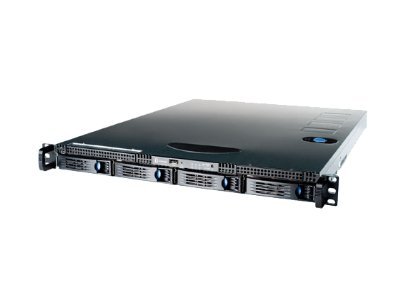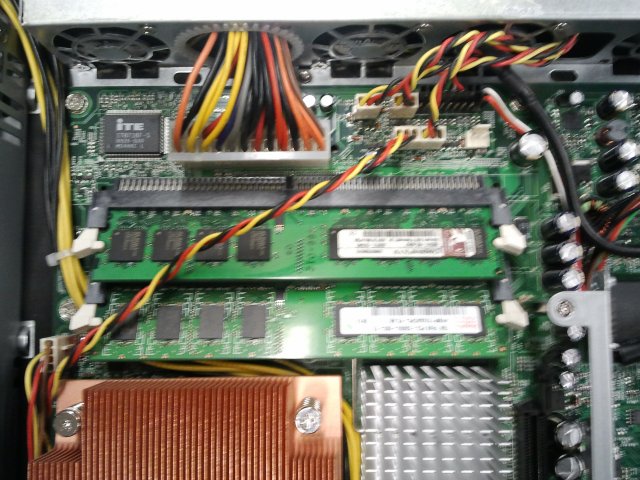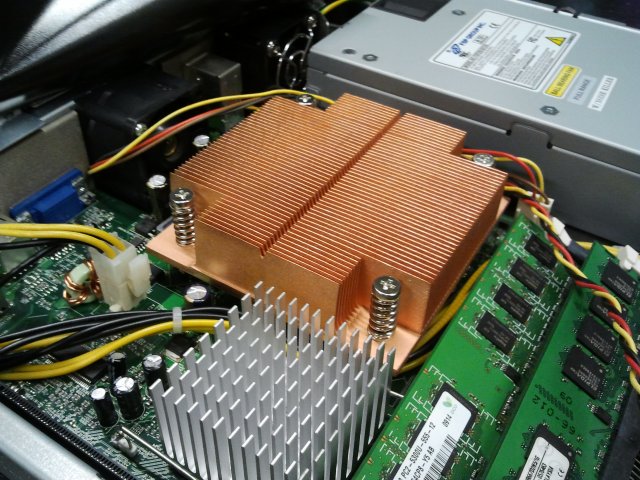Nas v2.0
| Project: Nas v2.0 | |
|---|---|
| Featured: | |
| State | Planned |
| Members | None currently |
| GitHub | No GitHub project defined. Add your project here. |
| Description | Migration of NAS activity to the IOmega |
| Picture | |
| No project picture! Fill in form Picture or Upload a jpeg here | |
Due to a sudden increase of ACKspace server inventory, we aquired a nice IOmega StorCenter Pro NAS 200rL NAS. This is an 1U rackmounted enclosure for holding up to 4 SATA harddrives. The general plan is to migrate our current 2 drive IBM P4 server based NAS solution to this StorCenter. Supposedly (we haven't turned it on yet) it has a linux based OS, which has some capability for sharingfiles over a network. However, we would need to expand the featurelist by installing our own linux version (FreeNAS or other).
Upgrades:
We installed an extra 1GB of DDR ram for increased performance.
The CPU is an Celeron D 352, a dual core CPU with 64 bit architecture. It should be plenty of power to maintain a decent performance.
List of features our perfect NAS would have:
- A bunch of SATA harddisks to hold all data. The Storcenter had 4 hotswap SATA bays, which is more than the current limit of 2 drives from the IBM.
- SMB shares over the network. SMB is a sharing protocol for Windows based computers, but it is widely accepted by both Linux and Mac OSes.
- Posibility to download from newsgroups. Idealy, the NAS would have an NZB drop location, which it reads periodically and starts downloading accordingly.
- Seperate (secure) share for netboot data.
- Possibly a section with mirrored data for something you don't want to loose in case of a drive failure. Mainly our NAS does not need any kind of failsafe, due to the nature of the contents, but this would be a nice add-on.
- Fast access. The StorCenter has, just like our current IBM, gigabit connectivity. However, the IBM tops out at around 40MB/s where we hope to get more performace out of the IOmega.
- ??? Anything more?


